ARCHITECTURAL REVIEW
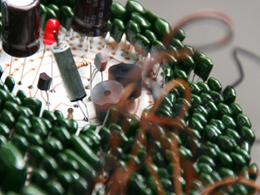
16 April, 2012
epp electronic pattern
An installation by electronic life forms (Pascal Glissmann and Martina Höfflin)
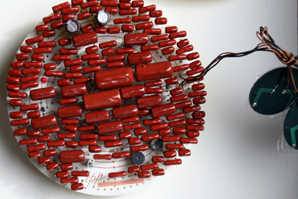
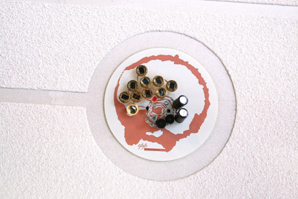
Wall#4 of the new IFI2 (Department of Computing) building at the University of Oslo is is captured by an electronic pattern parasite. This parasite is an organism that crawls up the wall by milling its way into the surface structure leaving a pattern - like structure behind.
The electronic pattern parasite is an organism that crawls from the light-spending windows across the wall of the IFI 2 building by milling its way into the surface leaving a pattern-like structure behind. Small sound producing organs sit at the far end of the relief - like tracks
and tentacles. As it did not take over the whole wall yet, students and visitors can continue this process of conquest in their imagination.
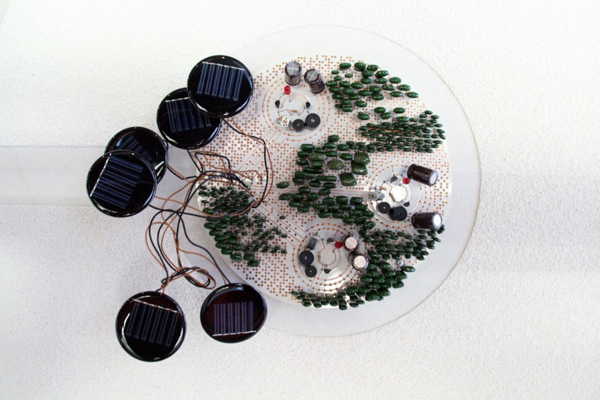
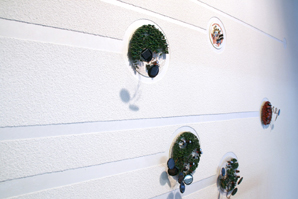
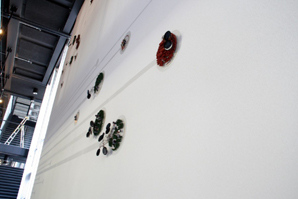
These organs of the parasite pattern reflect the nature and core philosophy of the IFI 2 building. As a part of the Oslo university it is a center of information and communication where sophisticated technology is used to enable students and teachers conducting their research. Most of these technologies are based on computerized processes which became arbitrary to human beings as they are not only incomprehensible but also concealed behind abstract software and hardware interfaces. In average day life we do not question these interfaces between machines and human beings anymore as they became a granted unquestionable paradigm for us. We rather tend to accept and even subordinate ourselves which seems to be surprising when we take a close look on the basic components which are used for the electronic circuits behind it.
The electronic pattern parasite reveals exactly these components by bringing them from the non visual world into a public environment. The depiction of the parasite as something that grows organically on the wall gives an autarkic character to it. This quality is intensified by
the uncontrollable and unpredictable sounds which are produced by the electronics. They are independent from human beings and only react to the light that is available. They remain silent in the dark, probably crawling up the wall through another milled tentacle...
The parasite has three different kind of organs that have specifically designed circuit boards of different sizes as a base. The copper circuits on the white round boards reflect the morphing of nature and technology as they show three different phases of an evolution from natural-organic to geometric-technical. While the veins of the smallest board have an organically grown - almost random - character, the graphical appearance of the largest board is accurate and geometric. In between - on the medium size board - a fusion of organic and geometric shapes can be found. The light depending output of all boards is similar but it increases in numbers related to the size.
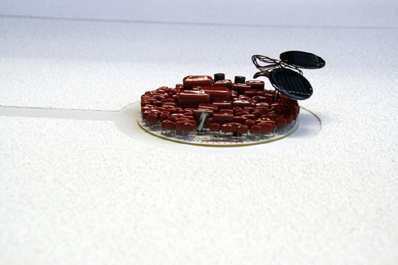
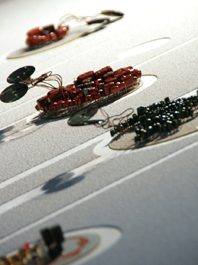
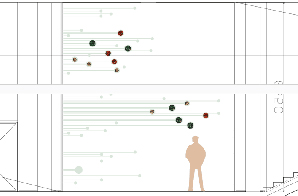
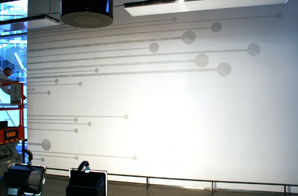
Facts
5 x circuit boards diameter 150 mm
5 x circuit boards diameter 180 mm
5 x circuit boards diameter 210 mm
7500 green capacitors
1500 red capacitors
30 solar cells, diameter 50 mm
50 solar cells, diameter 10 mm
29 circles, diameter 100 mm
5 circles, diameter 200 mm
4 circles, diameter 230 mm
6 circles, diameter 260 mm
60 m of 20 mm lines
25 m of 30 mm lines
15 m of 45 mm lines
Wall dimensions: 6 x 6,5 m










